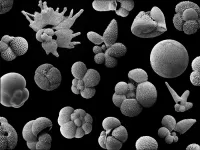(Press-News.org) (MEMPHIS, Tenn. – April 23, 2024) Survivors of childhood cancer are at increased risk for cardiovascular disease, for which a risk factor is their greater prevalence of type 2 diabetes, with a disproportionate impact on those of non-European heritage. St. Jude Children’s Research Hospital scientists have identified four previously unknown genetic variants associated with diabetes risk in all survivors. Published today in the Journal of Clinical Oncology, their work also found an association between a previously reported genetic risk score for type 2 diabetes developed in the general population with diabetes risk in survivors. The findings also provide novel insights into differences in risk between individuals of varying ancestries.
The work relied on the St. Jude Lifetime cohort study (St. Jude LIFE), a long-term follow-up study for individuals treated for cancer as children. This cohort enabled the researchers to identify the four previously unknown genetic variants. Those variants were more frequent in people of African descent than those of European ancestry. They also determined that compared to a polygenic risk score for type 2 diabetes derived in the general population of European ancestry, polygenic risk scores generated from diverse ancestry datasets were more informative in assessing diabetes risk in survivors of both European and African ancestries. All genetic risks appeared magnified by childhood exposure to alkylating agents, a common class of chemotherapeutics.
“We found DNA variants in survivors that increase the risk of type 2 diabetes,” said co-senior and corresponding author Yadav Sapkota, PhD, St. Jude Department of Epidemiology and Cancer Control. “Among survivors exposed to alkylating agents, these variants are conferring differential risk based on the ancestry, which may partially explain some of the disparity in type 2 diabetes burden in survivors.”
Childhood cancer survivors are at a three times increased risk of developing type 2 diabetes than their siblings. However, non-Hispanic Black survivors experience three times more risk than non-Hispanic white survivors. To understand those differences, the researchers performed whole genome sequencing on the patients from the St. Jude LIFE cohort involved in this study, comparing the DNA of survivors that had type 2 diabetes to those that did not, divided by ancestry. Through this work, the team created a rich and rare trove of combined clinical and genetic data.
Ancestry affects type 2 diabetes risk in childhood cancer survivors
“The genetic risk disproportionately affected survivors of African or African American ancestry previously treated with alkylating agents,” Sapkota said. “The same variant is implicated in both European and African-ancestry groups, but the amount of risk conferred by carrying the variant differs.”
To address that disparity in greater detail, the scientists compared previously reported polygenic risk scores for diabetes in the general population. Earlier research used many genetic variants, considered as a group, to assess disease risk. However, these risk scores were traditionally derived from those of European descent. The researchers compared three risk scores, a traditional score based only on those of European descent and two others developed by including people of different ancestries. The more inclusive scores both performed better in survivors of both European and African ancestries.
“The two risk scores derived from multiple ancestries were strongly associated with type 2 diabetes risk in survivors of diverse ancestries compared to the score developed in European-only ancestry,” Sapkota said.
Genetics amplify diabetes risk from alkylating agents in survivors
The research also suggested that another contributor to increased type 2 diabetes risk is exposure to alkylating agents, a class of chemotherapy commonly used in childhood cancer treatments.
“We saw very consistently, in three out of our four identified variants, and all of our polygenic risk scores, a significant increase in diabetes risk when survivors were exposed to alkylating agents during their initial treatment,” Sapkota said. “So genetic factors in the presence of alkylating agents can significantly enhance type 2 diabetes risk.”
The alkylating agent effect also had a greater impact on those of African ancestry. While the reasons for these differences in risk remain unclear, the study is a step in the right direction toward addressing them.
“We hope this information will help reduce disparities in the type 2 diabetes burden,” Sapkota said. “Now we know how to identify childhood cancer survivors most at risk of type 2 diabetes so we can provide more personalized opportunities for interventions and prevent cardiovascular complications down the road.”
Authors and funding
The study’s first author is Cindy Im, University of Minnesota. The study’s other co-senior author is Carmen Wilson, St. Jude. The study’s other authors are Eric Chow, Fred Hutchinson Research Center; Sogol Mostoufi-Moab, Children’s Hospital of Philadelphia; Tianzhong Yang, University of Minnesota; Melissa Richard, M. Monica Gramatges and Philip Lupo, Baylor College of Medicine; Noha Sharafeldin and Smita Bhatia, University of Alabama at Birmingham; Achal Neupane, Jessica Baedke, Brian Lenny, Angela Delaney, Stephanie Dixon, Gregory Armstrong, Melissa Hudson, Kirsten Ness, Leslie Robison and Yutaka Yasui, all of St. Jude.
The study was supported by grants from the National Cancer Institute (R21 CA261833, R01 CA261898, R01 CA216354, U01 CA195547, U24 CA55727, CA21765), Children’s Cancer Research Fund and University of Minnesota Foundation Pediatric Scholar Award and ALSAC, the fundraising and awareness organization of St. Jude.
St. Jude Media Relations Contact
Rae Lyn Hartley
Cell: (901) 686-2597
raelyn.rushing@stjude.org
media@stjude.org
St. Jude Children's Research Hospital
St. Jude Children's Research Hospital is leading the way the world understands, treats and cures childhood cancer, sickle cell disease and other life-threatening disorders. It is the only National Cancer Institute-designated Comprehensive Cancer Center devoted solely to children. Treatments developed at St. Jude have helped push the overall childhood cancer survival rate from 20% to 80% since the hospital opened more than 60 years ago. St. Jude shares the breakthroughs it makes to help doctors and researchers at local hospitals and cancer centers around the world improve the quality of treatment and care for even more children. To learn more, visit stjude.org, read St. Jude Progress, a digital magazine, and follow St. Jude on social media at @stjuderesearch.
END
Genetics predict type 2 diabetes risk and disparities in childhood cancer survivors
Scientists at St. Jude Children’s Research Hospital found genetic variants associated with increased risk of type 2 diabetes in childhood cancer survivors, with disparate effects by ancestry among those exposed to alkylating agents.
2024-04-23
ELSE PRESS RELEASES FROM THIS DATE:
Health information on TikTok: The good, the bad and the ugly
2024-04-23
In today's digital age, social media platforms like TikTok have become integral parts of our lives, offering not just entertainment and catchy dances but also a wealth of information on topics ranging from home improvement to world news. According to some reports, many young people even prefer to use social media in place of traditional search engines like Google when looking for answers.
Health information is no exception. Hashtags like #celiactok, #diabetestok and #sinustok have millions of views, with each tag leading to countless videos about each health issue.
“Every type of ‘Tok’ exists – that’s just ...
New study points to racial and social barriers that block treatment for multiple myeloma
2024-04-23
A UC Davis Health study reveals persistent racial and social disparities preventing access to autoHCT, a common bone marrow transplant treatment to halt the progression of multiple myeloma.
An analysis of data from three California health care organizations, published in Clinical Lymphoma, Myeloma & Leukemia, showed that Black myeloma patients were less likely to receive autoHCT. This was despite having a greater risk of developing the cancer than other racial or ethnic groups. Patients using Medicaid, Medicare, or no insurance in California also accessed the treatment less than those with other insurance ...
Rensselaer researcher finds that frog species evolved rapidly in response to road salts
2024-04-23
When we think of evolution, we think of a process that happens over hundreds or thousands of years. In research recently published, a team led by Rick Relyea, Ph.D., professor of biological sciences and David M. Darrin ’40 Senior Endowed Chair at Rensselaer Polytechnic Institute, found a species of frog that has evolved over the course of merely 25 years. The adaptation was spurred on by something many assume is innocuous: salt.
“We’ve been applying de-icing salts to reduce car accidents in snowy and icy conditions in the United States for 80 years, and we currently apply four times more road salt than we did ...
A new chapter in quantum vortices: Customizing electron vortex beams
2024-04-23
A new publication from Opto-Electronic Advances; DOI 10.29026/oea.2024.230184 , discusses tailoring electron vortex beams with customizable intensity patterns by electron diffraction holography.
In recent years, the scientific community has witnessed a notable breakthrough in the study and development of electron vortices. Electron vortices are electron beams that carry orbital angular momentum, meaning the electrons move not only in their propagation direction but also rotate in a vortex-like manner. This unique characteristic offers many new physical properties and potential applications, making it a powerful ...
Don’t be a stranger – study finds rekindling old friendships as scary as making new ones
2024-04-23
sychologists from Simon Fraser University (SFU) and the University of Sussex have found that people are as hesitant to reach out to an old friend as they are to strike up a conversation with a stranger, even when they had the capacity and desire to do so. The new research is published today in the journal Nature Communications Psychology.
Scientific research has shown that social relationships are important to human happiness, and that the greater the number and range of friendships that we engage with, the better our wellbeing. But once relationships are formed, some ...
There’s no ‘one size fits all’ when it comes to addressing men’s health issues globally
2024-04-23
Even with important strides in addressing health issues across the globe, men have not benefited equally compared to women. Men’s life expectancies have not grown as steadily as women’s over the past few decades, and they are expected to live about five years less than women, according to 2021 global health data from the Human Mortality Database and the United Nations’ World Population Prospects. The discrepancy in life expectancy between men and women persists in places all over the world, and is even growing in other places.
At a time when health resources are at a premium and need to be wisely allocated, health professionals ...
Comparison of the “late catch-up” phenomenon between BuMA Supreme and XIENCE stents through serial optical coherence tomography at 1–2 month and 2 year follow-ups: A multicenter study
2024-04-23
https://www.scienceopen.com/hosted-document?doi=10.15212/CVIA.2024.0024
Announcing a new article publication for Cardiovascular Innovations and Applications journal. This study was aimed at comparing the “late catch-up” phenomenon between the BuMA Supreme bioresorbable polymer sirolimus-eluting stent and the XIENCE stent through serial optical coherence tomography (OCT) at within 2 months and 2 year follow-ups.
A total of 49 of 75 patients from the PIONEER-II study were enrolled in a 2 year OCT follow-up study; 44 patients with 50 lesions were included in the statistical ...
Marine plankton communities changed long before extinctions
2024-04-23
For hundreds of millions of years, the oceans have teemed with single-celled organisms called foraminifera, hard-shelled, microscopic creatures at the bottom of the food chain. The fossil record of these primordial specks offers clues into future changes in global biodiversity, related to our warming climate.
Using a high-resolution global dataset of planktonic foraminifera fossils that’s among the richest biological archives available to science, researchers have found that major environmental stress events leading to mass extinctions are reliably preceded by subtle changes in how a biological ...
Research reveals tools to make STEM degrees more affordable
2024-04-23
In a new study in Issues, Dominique J. Baker, an associate professor in the College of Education and Human Development and the Joseph R. Biden, Jr. School of Public Policy & Administration at the University of Delaware, explored the role of student loans on hopeful students striving for college degrees, particularly in STEM.
The cost of attending a public four-year college in the United States has more than doubled since the early 1990s, when inflation is factored in.
Undergraduate student loan debt has become unmanageable for a wide swath of borrowers ...
Q&A: UW research shows neural connection between learning a second language and learning to code
2024-04-23
As computer programming becomes an increasingly valued skill in the workforce, there is a greater need to understand how people learn to code most effectively.
Statistics show that up to 50% of students who enroll in introductory programming courses in the United States eventually drop out, suggesting a mismatch between how coding is learned and the way it’s taught. A new study from the University of Washington, published March 5 in Scientific Reports, examines that issue.
The researchers recorded electrophysiological brain responses of varyingly skilled programmers as they read ...
LAST 30 PRESS RELEASES:
Injectable breast ‘implant’ offers alternative to traditional surgeries
Neuroscientists devise formulas to measure multilingualism
New prostate cancer trial seeks to reduce toxicity without sacrificing efficacy
Geometry shapes life
A CRISPR screen reveals many previously unrecognized genes required for brain development and a new neurodevelopmental disorder
Hot flush treatment has anti-breast cancer activity, study finds
Securing AI systems against growing cybersecurity threats
Longest observation of an active solar region
Why nail-biting, procrastination and other self-sabotaging behaviors are rooted in survival instincts
Regional variations in mechanical properties of porcine leptomeninges
Artificial empathy in therapy and healthcare: advancements in interpersonal interaction technologies
Why some brains switch gears more efficiently than others
UVA’s Jundong Li wins ICDM’S 2025 Tao Li Award for data mining, machine learning
UVA’s low-power, high-performance computer power player Mircea Stan earns National Academy of Inventors fellowship
Not playing by the rules: USU researcher explores filamentous algae dynamics in rivers
Do our body clocks influence our risk of dementia?
Anthropologists offer new evidence of bipedalism in long-debated fossil discovery
Safer receipt paper from wood
Dosage-sensitive genes suggest no whole-genome duplications in ancestral angiosperm
First ancient human herpesvirus genomes document their deep history with humans
Why Some Bacteria Survive Antibiotics and How to Stop Them - New study reveals that bacteria can survive antibiotic treatment through two fundamentally different “shutdown modes”
UCLA study links scar healing to dangerous placenta condition
CHANGE-seq-BE finds off-target changes in the genome from base editors
The Journal of Nuclear Medicine Ahead-of-Print Tip Sheet: January 2, 2026
Delayed or absent first dose of measles, mumps, and rubella vaccination
Trends in US preterm birth rates by household income and race and ethnicity
Study identifies potential biomarker linked to progression and brain inflammation in multiple sclerosis
Many mothers in Norway do not show up for postnatal check-ups
Researchers want to find out why quick clay is so unstable
Superradiant spins show teamwork at the quantum scale
[Press-News.org] Genetics predict type 2 diabetes risk and disparities in childhood cancer survivorsScientists at St. Jude Children’s Research Hospital found genetic variants associated with increased risk of type 2 diabetes in childhood cancer survivors, with disparate effects by ancestry among those exposed to alkylating agents.





